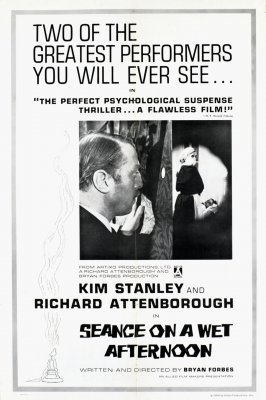poetman
A-List Customer
- Messages
- 357
- Location
- Vintage State of Mind
When you move away from the plot details and consider the quintessential noir criterion: high contrast lighting, it seems like you drastically reduce the noir elements of a film if you placed it in color. Certainly you would still have the noir plot, but I can't imagine any of these great films having the same resonance if they were in color, and it sounds odd to say given that they actually took place in color. Imagine any scene from your favorite noir in color--colorful suits and ties, colorful dresses, colorful interiors, soulful streets, etc. The color simply removes you further from what we identify as noir.
How do you all feel color alters the noir qualities of a film?
How do you all feel color alters the noir qualities of a film?



